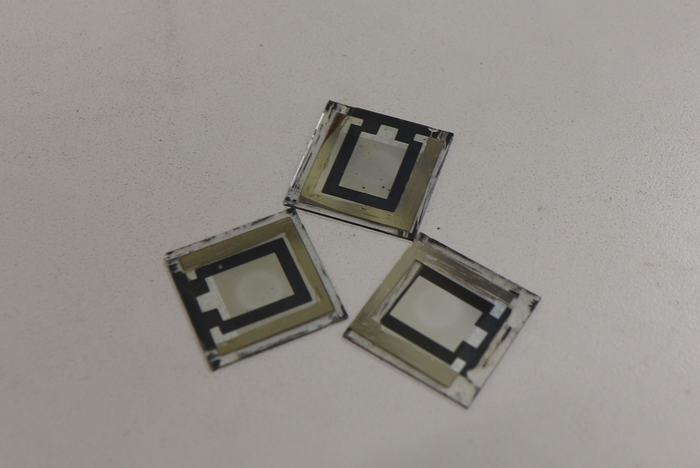Scientists from the City University of Hong Kong have developed an inverted perovskite solar cell with a new additive that is purportedly capable of modulating the perovskite film growth through a hydrogen-bond-bridged intermediate phase.
The additive, which they described as “multifunctional and non-volatile,” consists of a molecule known as 4-guanidinobenzoic acid hydrochloride (GBAC), which is a raw material and intermediate commonly utilized in organic synthesis, pharmaceuticals, agrochemicals and dyestuff fields.
“This molecule can also serve as an effective defect passivation linker in the annealed perovskite film due to its non-volatility, resulting in significantly reduced non-radiative recombination loss and improved film quality,” the academics explained, noting that, through its addition, a hydrogen-bond-bridged intermediate phase is formed and high-quality perovskite films can be achieved.
The device has a p–i–n structure and showed considerably reduced defect density on the perovskite film, which in turn results in reduced non-radiative recombinations.
The cell achieved a maximum power conversion efficiency of 24.8% and certified efficiency of 24.5%, with the Japan Electrical Safety & Environment Technology Laboratories (JET) confirming the result. “The overall energy loss of the device was reduced to 0.36 eV, representing one of the lowest energy losses among the perovskite PV devices with high power conversion efficiency,” the scientists added.
Popular content
The cell was also able to retain 98% of its initial efficiency for over 1,000 hours under continuous heating at around 65 C in a nitrogen-filled glovebox.
The scientists also built a larger area device of 1 cm2 with this cell technology and the new cell achieved an efficiency of 22.7%, which they say shows the technology is fully scalable. “This effective approach can also be applied to wide-bandgap perovskites and large-area devices to show reduced voltage loss and high efficiency,” they said.
They published their findings in the paper “Hydrogen-bond-bridged intermediate for perovskite solar cells with enhanced efficiency and stability,” published in nature photonics.
This content is protected by copyright and may not be reused. If you want to cooperate with us and would like to reuse some of our content, please contact: editors@pv-magazine.com.



By submitting this form you agree to pv magazine using your data for the purposes of publishing your comment.
Your personal data will only be disclosed or otherwise transmitted to third parties for the purposes of spam filtering or if this is necessary for technical maintenance of the website. Any other transfer to third parties will not take place unless this is justified on the basis of applicable data protection regulations or if pv magazine is legally obliged to do so.
You may revoke this consent at any time with effect for the future, in which case your personal data will be deleted immediately. Otherwise, your data will be deleted if pv magazine has processed your request or the purpose of data storage is fulfilled.
Further information on data privacy can be found in our Data Protection Policy.